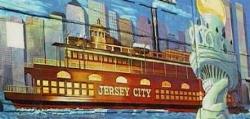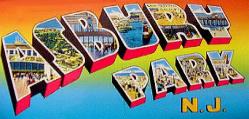 |  |  |
|
| ||
 |  |  |
 |  |  |
|
| ||
 |  |  |
|
|
By Harriet Phillips Eaton
Published 1899
This Web version, edited by GET NJ
COPYRIGHT 2002
Dudley S. Gregory was the first Mayor of Jersey City. He served in that capacity in 1838'39 '41-'58 and '59. He lived in the building now used as a post office on Washington street; in what is still a pretty part of the city, with its four park corners on Washington and Grand streets. Mr. Gregory was a man of wealth and of public spirit; he imported a large number of European shade trees, among them the variety of "horse chestnut" which has become a favorite shade tree throughout our eastern states, to such an extent that our native horse chestnuts or buckeyes are scarcely known in the east, the principal difference being that the native varieties have smaller clusters of flowers which shade from a yellow or pink tinge to a deep pink or dull red.
On March 8th, 1839, the city boundaries were extended along the northerly side of First street to the center of Grove street, thence southerly into Communipaw Bay to the line of South street, extended. Hudson County was set off from Bergen County in 1840. The township of Van Vorst, founded in 1804 by John B. Coles, was separated from the township of Bergen, March 11, 1841; it included all that portion formerly known as Ahasimus. In March, 1851, it became a part of Jersey City.
In 1868 there was an effort made for the consolidation of the several cities and townships in Hudson County, east of the Hackehsack river, into one under the name of Jersey City. At the election held October 5th, 1869, Jersey City, Bergen and Hudson City became one. The latter had been taken from the township of North Bergen and incorporated as the "Town of Hudson in the County of Hudson " on March 4th, 1852. On the 11th of April, 1859, it was incorporated as the "City of Hudson," with powers of government vested in a mayor and common council. In 1873 the town of Greenville was annexed to Jersey City by legislative act. Greenville was originally a settlement of German families on a part of the Gautier tract. Lafayette was never a separate municipality; the name was given by a land company to the Garrabrant farm when it was bought and mapped out in town lots in 1856. The lots did not sell well until after the war.
|
|
|
|
 Your Ancestors' Story |
 Bruce Springsteen's Jersey Shore Rock Haven! |

|
UrbanTimes.com |